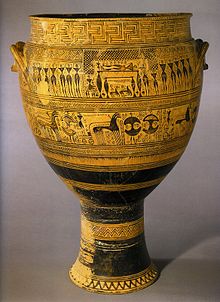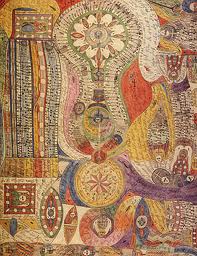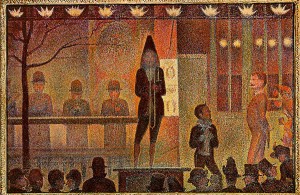previous
Where does collecting end and hoarding begin?
starting exploration
Thoughts and questions related to the essay “Edna’s List”
- Attached to the essay "Edna’s List"
Beauty in clutter
Posted December 5, 2011 12:49 pmThere is actually a name for this: horror vacui. It’s an art style in which every inch of blank space is filled and dates back at least to 750 BCE, when it appeared on ancient Greek vases. Islamic art and architecture and illuminated manuscripts offer other early examples.
Islamic art and architecture and illuminated manuscripts offer other early examples.
The style is associated with altered states of mind, such as with the visionary art of indigenous peoples or 60’s psychedelic practitioners (sometimes with the help of hallucinogens). Today it’s become attached to outsider art—often that of mental patients—which creates the sense that there is something crazy about the style.  Horror vacui suggests a phobia, something like the opposite of agoraphobia; instead of a fear of crowds, a fear of the uncrowded. Hoarding comes to mind. Certainly, it demands a kind of concentration, a meditative state perhaps, that may be calming to people who might otherwise have trouble modulating their moods. But so what? Probably most art-making induces such a state of mind. Perhaps we should think of horror vacui as presenting the rich, cellular, fullness of life along with the simultaneity of body and spirit
Horror vacui suggests a phobia, something like the opposite of agoraphobia; instead of a fear of crowds, a fear of the uncrowded. Hoarding comes to mind. Certainly, it demands a kind of concentration, a meditative state perhaps, that may be calming to people who might otherwise have trouble modulating their moods. But so what? Probably most art-making induces such a state of mind. Perhaps we should think of horror vacui as presenting the rich, cellular, fullness of life along with the simultaneity of body and spirit
And why apply the term so narrowly? What about the paintings of Gustave Klimt or George Seurat? 

topics: art
share
 site feed
site feed


